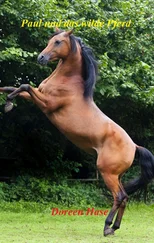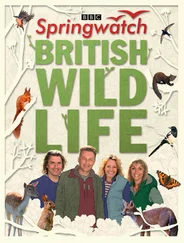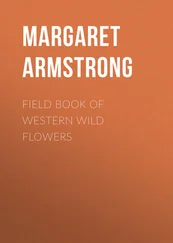1 ...7 8 9 11 12 13 ...28 
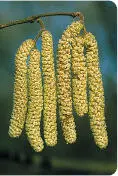
Hazel catkins
Hazel
Hazel Corylus avellana (Betulaceae) HEIGHTto 12m
Dense woodland shrub or small tree; often coppiced. FLOWERSCatkins (male) or small red, tufted structures (female) (Jan–Mar). FRUITSHard-cased nuts, green, ripening brown in autumn. LEAVESAppearing after flowers, 6–8cm long, circular to oval, with double-toothed margins. STATUSCommon and widespread.


Bog-myrtle
Bog-myrtle Myrica gale (Myricaceae) HEIGHTto 1m
Woody, brown-stemmed shrub that is characteristic of boggy habitats, usually on acid soils. FLOWERSOrange, ovoid male catkins or pendulous brown female catkins; on separate plants (Apr). FRUITSBrownish nuts. LEAVESOval, grey-green, smelling of resin when crushed . STATUSWidespread but local; sometimes locally dominant.

Berries
Mistletoe
Mistletoe Viscum album (Viscaceae)  DIAMETERto 1m
DIAMETERto 1m
Woody, evergreen parasite with evenly forked branches. Forms large, spherical clumps among branches of host trees, mainly apple (often in cultivation), lime and poplar. FLOWERSInconspicuous (Feb–Apr). FRUITSWhite, sticky berries. LEAVESOval, yellowish green, in opposite pairs. STATUSWidespread but local.
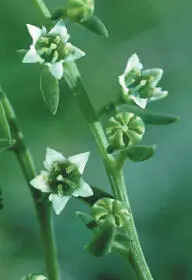
Bastard-toadflax
Bastard-toadflax Thesium humifusum (Santalaceae) PROSTRATE
Low-growing plant of chalk grassland with sparse branches and a woody base. FLOWERSCup-shaped, fused; white inside, yellowish green outside; 4 or 5 pointed lobes create a starlike appearance (June–Aug). FRUITSGreenish, ovoid. LEAVES5–15mm long, oval, yellowish green. STATUSExtremely local and habitat-specific.
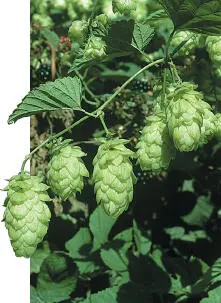
Hop
Hop Humulus lupulus (Cannabaceae) HEIGHTto 6m
Twining, hairy hedgerow climber. Grows on a range of soils, often a relict of cultivation. FLOWERSClustered; greenish yellow (male) or green and hop-like (female) (June–Aug). FRUITSFamiliar hops, ripening brown in autumn. LEAVESDivided into 3–5 coarse-toothed lobes. STATUSWidespread, locally common only in the south.

Common Nettle
Common Nettle
Common Nettle Urtica dioica (Urticaceae) HEIGHTto 1m
The familiar stinging nettle. FLOWERSPendulous catkins; borne on separate-sex plants (June–Oct). FRUITSSuperficially resembling flowers. LEAVESOval, with pointed tips, toothed, in opposite pairs; 8cm long and longer than stalks. STATUSWidespread and common, doing best on nitrogen-enriched and disturbed soils.
Small Nettle
Small Nettle Urtica urens (Urticaceae)  HEIGHTto 50cm
HEIGHTto 50cm
Similar to Common Nettle but smaller and annual. FLOWERSPendulous catkins, male and female on same plant (June–Sep). FRUITSSuperficially resembling female flowers. LEAVESOval, with pointed tips, toothed; up to 4cm long; lower leaves shorter than their stalks. STATUSWidespread and locally common on disturbed ground.

Pellitory-of-the-wall
Pellitory-of-the-wall Parietaria judaica (Urticaceae) HEIGHTto 7cm
Spreading, downy perennial with reddish stems. Colonises walls, roadsides and rocky ground. FLOWERSClustered at leaf bases (June–Oct). FRUITSClustered at leaf bases. LEAVESOval, up to 5cm long and long-stalked. STATUSWidespread in England, Wales and Ireland; commonest in coastal areas and in the west.

Nettle, Birthwort and Knotweed Families
Cleave, Andrew
Mind-your-own-business
Mind-your-own-business Soleirolia soleirolii (Urticaceae) PROSTRATE
Mat-forming perennial with wiry, threadlike stems. FLOWERSMinute, pink (May–Aug). FRUITSMinute, hard to discern. LEAVESTiny, rounded, untoothed and evergreen. STATUSA garden escape, colonising walls and paths, mainly in the south-west.
Cleave, Andrew
Asarabacca
Asarabacca Asarum europaeum (Aristolochiaceae)  HEIGHTto 30cm
HEIGHTto 30cm
Evergreen perennial associated with shady banks and woodland margins. Creeping, hairy stems. In suitable locations, forms carpets often alongside ivy. FLOWERSPurplish brown, 15mm long, bell-shaped with 3 terminal lobes (May–Aug). FRUITSBrownish capsules. LEAVESDark green, shiny, kidney-shaped. STATUSNative in a few locations but also naturalised.

Birthwort
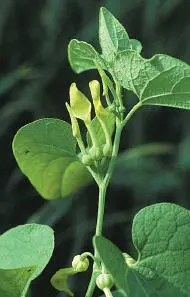
Birthwort
Читать дальше
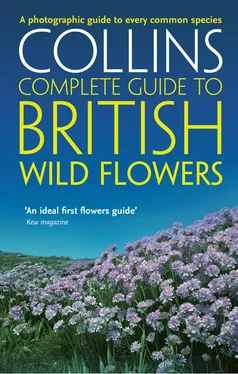





 DIAMETERto 1m
DIAMETERto 1m




 HEIGHTto 30cm
HEIGHTto 30cm



